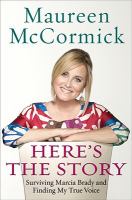 What do you do when the whole world wants you to stay a child forever? When your juvenile self is more real and lovable to everyone you meet than the adult you?
What do you do when the whole world wants you to stay a child forever? When your juvenile self is more real and lovable to everyone you meet than the adult you?
Such was the real life plight of two very different women: Alice Liddell Hargreaves and Maureen McCormick, better known respectively as “Alice in Wonderland” and “Marcia Brady”. Both were cemented in the public consciousness at a very young age: Hargreaves was 10 when Alice in Wonderland was written, McCormick 13 when The Brady Bunch became a hit. Both spent their adult years trying to distance themselves from their fictional alter egos, with varying degrees of success.
as “Alice in Wonderland” and “Marcia Brady”. Both were cemented in the public consciousness at a very young age: Hargreaves was 10 when Alice in Wonderland was written, McCormick 13 when The Brady Bunch became a hit. Both spent their adult years trying to distance themselves from their fictional alter egos, with varying degrees of success.
“Imagine always being shadowed by a younger, prettier, more popular you”. So begins McCormick’s memoir, Here’s the Story: Surviving Marcia Brady and Finding My True Voice. A child model and actress from toddlerhood, McCormick and her family had no idea that a dimwitted sitcom called “The Brady Bunch” would become a cultural juggernaut, casting her forever as the ideal American teenager. Though the show only lasted 6 years, McCormick has spent the rest of her life gracefully (and not so gracefully) autographing I LOVE MARCIA tattoos on potbellied men, and gritting her teeth when asked how “Marcia” feels to be turning 50, (“Politely, I reminded them that Marcia Brady was still a teenager..”). After years of career missteps, depression, eating disorders, and drug problems, she finally found peace, marrying the one man she ever met who had never watched the show.
Alice Liddell Hargreaves would have understood. In Melanie Benjamin’s vivid reimagining of her story, Alice I Have Been she wryly observes of her husband that, “Regi was the only person who had not needed me to be someone else… His death notice included the mention that in 1880 he had married Alice in Wonderland. I like to think he would have been pleased at that but the truth is he was the only one to whom this didn’t matter at all.”
Alice’s life would have been remarkable even had she never met a peculiar mathematics don named Charles Dodgson. As the daughter of the brilliant dean of Oxford’s Christ Church college and his socially ambitious wife, she studied art with John Ruskin, flirted with the sons of Queen Victoria, and was photographed memorably by Julia Margaret Cameron. Her long lifetime encompassed the cataclysmic shifts in English society brought on by the industrial revolution and World War I.
Yet despite her rich, emotionally varied life, Alice Liddell, the keen-eyed belle of Oxford, later Mrs Reginald Hargreaves, the country gentleman’s lady, could never escape the long shadow of her childhood relationship with Charles Dodgson. In Benjamin’s retelling, “Alice” and its author played an unwanted role in much of her later life, and may even have lost the real Alice her one true love.
“Oh my dear, I am tired of being Alice in Wonderland. Does it sound ungrateful? It is–only I do get tired!”, wrote the 80 year old Hargreaves to her son in 1932. She had just been feted in New York with an honorary doctorate of letters, and had sold the original manuscript of “Alice” for a record breaking sum. Yet her celebrity inevitably leads to disappointment, “the disappointment, brief and politely suppressed in all the faces…of looking for a bright little girl in a starched white pinafore and finding an old lady instead”. Alice, “immortalized in print not merely as a little girl but rather as the embodiment of Childhood itself” is forever, “confronted by people who ask, always so very eagerly to see ‘The real Alice”‘ and who cannot hide the shock, the disbelief that the real Alice has not been able to stop time.”
Stop time? No. Yet “Alice’ and”Marcia” have achieved an unwitting immortality, a “looking glass” Dorian Gray immortality. And like that eternally beautiful, eternally worshipped youth, neither was ever able to completely sever an immutable image from her real life.
Lesley W.
